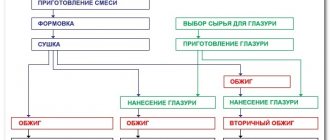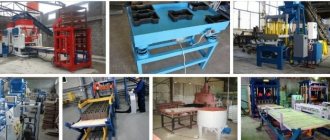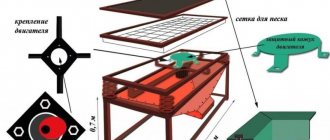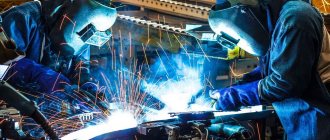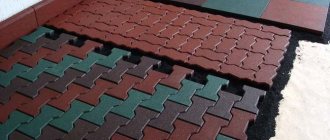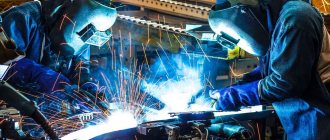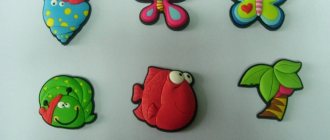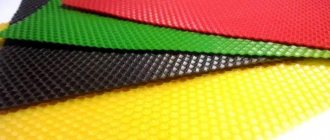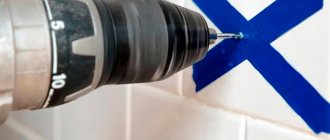Only subject to strict adherence to tile production technology can a high-quality product with high performance characteristics be obtained. Today, many domestic and foreign factories are engaged in the production of tiles. Despite the fact that the production of ceramic tiles is a rather complex technological process, some craftsmen make tiles at home. This is done not only for the purpose of saving, but also to obtain a unique product. We will talk about the production of tiles at home and in factories.
Historical introduction
The first examples of ceramic tiles began to be made in the distant past, and were found in the area between the Euphrates and Tigris rivers even BC. Finishing material is still one of the most popular in the construction market today.
Despite the centuries-old history of ceramic tiles, the manufacturing process of this material from different manufacturers is almost identical. Only the technologies, equipment, tools and equipment used differ.
Advantages of porcelain stoneware
Buyers often confuse tiles and porcelain tiles. In fact, both products are classified as ceramic, but the composition of porcelain stoneware and ceramic tiles is different. Porcelain tiles are made from clay, which contains a lot of iron oxide. The composition of porcelain stoneware ceramic tiles is much denser and stronger than tiles; its structure resembles glass and is uniform.
Tile is used to cover floors and walls in interior spaces; porcelain stoneware is used, as a rule, for floor coverings and in situations where a material of increased strength is required.
The chemical composition of ceramic tiles is environmentally friendly; it is free of harmful substances that may be present in natural minerals. Various color schemes can be reminiscent of rare rocks of granite, marble, and even volcanic lava.
The chemical composition of ceramic tiles is based on the data above in the attached photo
In addition, it is stronger than natural granite, and is practically waterproof and does not absorb moisture, so this composition of ceramic tiles is often used for floors; it is also suitable and is often used for tiling outdoor surfaces.
The composition of tiles for ceramic floors is the same as for wall tiles, but the firing of floor tiles and subsequent processing cycles are different
Raw materials for the production of ceramic tiles
Raw materials and components used:
- The main components are clay, kaolin;
- Raw materials for reducing shrinkage – quartz sands;
- Fluxes to reduce the sintering temperature - nephelines, slags, feldspars;
- Additives – mechanically activating, surfactants, thinners.
All raw materials used to create ceramic tiles can be conditionally classified into the following groups:
- Clay components that provide plasticity to the mass for further molding of the finishing material;
- Quartz components that contribute to the formation of the tile skeleton;
- Carbonate raw material that imparts a glassy structure to the fired product.
Varieties depending on porosity and water absorption
The application and type of tile directly depends on characteristics such as porosity and water absorption.
Tile porosity
To determine this criterion, you need to weigh the tile dry and then place it in boiling water for 2 hours. After this time, the product should be weighed again. The percentage increase in weight is the porosity ratio.
Important! On the packaging, these data are indicated in capital letters (A, B, C), where A is the minimum porosity indicator.
Water absorption
The lower the porosity, the lower the water absorption rate.
There is a known classification of tiles according to the value of this coefficient. For example:
- group 1 – level of water and moisture absorption not less than 3%;
- group 11a – from 3 to 6%;
- group 11b – from 6 to 10%;
- group 111 – more than 10%.
If the tile has a high water absorption property (the last two groups), it can be used to decorate the walls and floors of the bathroom. The first two groups of tiles are suitable for decorating external surfaces.
Ceramic tile production - technology
Depending on the characteristics of the technological process for creating ceramic tiles, the following types of finishing materials are distinguished:
- Unglazed ceramic tiles;
- Single fired glazed tiles;
- Double fired glazed tiles.
A detailed examination of the technological scheme for the production of these types of products can identify a number of repeating stages, but there are also fundamental differences.
The stages that make up the technological process for the production of ceramic tiles, characteristic of all types of products:
1. Mix preparation is a complex process of obtaining a homogeneous mass, the required grain size and water content. Preparation of the mixture includes the following operations:
- grinding;
- mixing-homonization;
- hydration.
At this stage of production, two technologies can be used:
— A technology that involves grinding raw materials in water, after which the slip is dried by spraying;
— Dry grinding and subsequent bringing the mixture to a given moisture level.
In the process of preparing the mixture, different manufacturers can not only adhere to the above two technologies, but also change the composition of the mixture. For example, the American factory for the production of ceramic tiles "Vortek" when preparing the mixture introduces up to 70-90% of the glass component, used in the form of vitrified ash.
2. Molding (Fig. 1) - carried out by pressing. As you know, more than 95% of ceramic tiles manufactured in factories in Spain are produced by pressing. During pressing, under the influence of high pressure, the powdery mass is compressed in two directions. During the pressing process, the granules are deformed, and the tile acquires the necessary strength and density.
Rice. 1
3. Drying is a production stage at which water is removed from products necessary for molding. During this operation, it is very important to organize quality control of products. Indeed, during drying, cracks or other deformations may occur on the surface of the ceramic tile.
4. Glazing - this operation is carried out only in the production of glazed ceramic tiles. During this operation, glaze is applied to the surface of the product and spread over the entire surface. The composition of the glaze may include: sand, kaolin, coloring pigments, frits.
5. Firing - carried out in special kilns, which are a tunnel. The products are moved through the tunnel on special conveyors, first they are heated and only then the firing temperature reaches the maximum value, which can be more than 1250 °C.
If it is necessary to produce double-firing glazed ceramic tiles, then the glaze is applied after the initial firing and only then the products are subjected to a second operation.
The technological flow diagram for the production of ceramic tiles is shown in Fig. 2.
Rice. 2
The technology for producing ceramic tiles may differ between foreign factories and domestic companies.
For example, many domestic factories have implemented the Rotocolor system, which is an automatic self-cleaning system. This system allows you to decorate ceramic tiles on any surface. Thanks to this technology, manufacturers' products are characterized by competitive advantages.
Molding
All modern methods of molding ceramic tiles, according to ISO standards, are divided into three groups. Group A - extrusion method (production of cotto tiles, clinker). Group B - pressing method (ceramic granite, monocottura, bicottura). Group C included all other methods (for example, hand molding, glass mosaic casting).
The most widespread method is the pressing method (about 98% of all ceramic tiles). When pressing, the powder mixture is loaded into the molds of a hydraulic press, where it is compacted under high pressure (up to 500 kg/cm2) and acquires a certain strength. Already at this stage, the tile can be subjected to additional processing. So, to obtain prepolished porcelain stoneware, the surface of the tile is polished with soft brushes even before firing. Using molds, not only the geometric shapes and dimensions of ceramic tiles are specified, but also the texture of its surface (for example, in Pietra d'Italia it is embossed, in Celadon it is concave, etc.).
Equipment for the production of ceramic tiles
Depending on the purpose of the enterprise
Enterprises that are just starting to produce ceramic tiles need the appropriate equipment:
- Concrete mixer or containers made of stainless steel, equipped with a mixing device;
- Vibrating machine;
- Molds for ceramic tiles;
- Industrial oven for drying and firing products;
- Chamber for spraying glaze and designs.
If the goal of the enterprise is to produce unique products, then additional production equipment may be required:
- Improved spray chamber;
- A set of stencils that allow you to apply a unique and original design to the tiles.
Ceramic tile production line
At large factories that lead in sales of ceramic tiles, automated lines are installed. As a rule, domestic enterprises install imported equipment of Spanish and Italian production. SACMI lines installed at factories allow the production of single- and double-firing tiles (Fig. 4). You can make your products competitive by equipping your design bureau with equipment for laser firing of silicone drums, made in Italy.
Rice. 4
Surface types and degree of abrasion
The use of one or another type of production, as well as their combination, makes it possible to produce tiles with different types of surfaces. For example.
Glazed
The use of glaze gives the finished product such qualities as shade, density, water permeability, strength, etc. The thickness of the glaze layer ranges from 1-2 mm.
Unglazed
Despite the absence of a glazed layer, the surface of the tile has an attractive appearance. This became possible thanks to the use of press powders, which give the tiles a decorative effect. This effect can also be achieved by polishing or waxing the surface.
Abrasion
This indicator is determined by the degree of anti-slip resistance. The higher the abrasion rate, the greater the safety of the product.
Important! The specific level of abrasion is indicated on the packaging in the form of markings.
For example:
- R 9 – indicates the possibility of using the material for finishing halls, vestibules, and sales areas;
- R 10 – tiles are intended for use in public spaces;
- R 11 – the material is used for finishing rooms with high levels of humidity and pollution;
- R 12 – tiles are used for decorating freezers and cold rooms;
- R 13 – the product has maximum anti-slip effect.
Before choosing a tile, it is recommended to read the description of the markings on the packaging. This way you can determine whether it can be used for interior or exterior work.
Corrective compositions for restoration of products
The tile forms a fairly durable ceramic coating. But if handled carelessly, cracks or chips may appear on it. As a result, the ceramic product loses its well-groomed appearance and attractiveness.
You can restore lost qualities and integrity with the help of a corrective composition. This unique tool will allow you to avoid costly major repairs.
There are two ways to restore ceramic tiles:
- A method in which tiles are removed from a wall.
- A method in which the tiles are not removed from the wall.
First way
Let's consider the first method.
- First, you need to remove the damaged tile with gentle movements. This must be done very carefully so that adjacent tiles are not damaged.
- If the tile cannot be removed, then it is necessary to clean the seams between the tiles. After this, you need to slowly knock on the tile itself.
- Finally, pry off the cracked tiles with a spatula. The removal procedure at all stages must be particularly careful. If the tile is severely cracked, there is a risk of it breaking into several parts.
- After the tile is removed, the mortar or adhesive should be cleaned off the back side. The process is quite labor-intensive. To make it easier, soak the tiles in warm water for 12 hours. After this, the fixing solution will be easier to remove from the surface.
- Don't forget about the place where the tile was glued. It also needs to be cleaned.
- The place where the tile was glued is coated with epoxy glue.
- Next, the parts of the tiles are fastened with the same glue. To do this, epoxy adhesive is applied to the back of the tile.
- After application, immediately fix the tiles in place. At the same time, be sure to press it firmly against the wall.
- The seams are rubbed with grout mixed with the same epoxy glue. The procedure for sealing seams should be performed several hours after gluing.
Recruitment and payroll
At the very least, you will be the director at first and you will be able to determine your salary yourself. For example, let’s take 40 thousand rubles; with good results, it can always be increased.
You will, of course, need an accountant, unless you decide to outsource this work to a specialist who simultaneously “runs” many small businesses.
To support production: mixing the mixture, pouring into molds, monitoring the operation of equipment, 3-4 people will be enough. 1-2 support workers and an office manager will also be needed.
The easiest way to find all the staff is through job sites like HeadHunter, Avito, Superjob and others; you can also use the site of a commercial newspaper like “My Advertising” or “From Hand to Hand”, if you have something similar in your region.
After selecting several resumes sent to you by email, you can conduct interviews yourself. An important point: call the telephone numbers left by applicants you like as contacts of their recommenders from previous places of work - such conversations may reveal new and very useful information about them.
Let's look at calculating employee salaries.
| Job title | Number, people | Rate, t.r. | Amount, t.r. |
| Director | 1 | 40 | 40 |
| Accountant | 1 | 20 | 20 |
| Office Manager | 1 | 25 | 25 |
| Workers | 3 | 35 | 75 |
| Helpers | 2 | 20 | 40 |
| Total | 200 |
Thus, 200 thousand rubles will be spent monthly on staff work. Taking into account possible bonuses, we will take the average amount of 230 thousand rubles as a guide.
Financial calculations
Let's start with the basic investment:
- equipment – 530 tr.;
- permits - 25 thousand rubles, total 555 thousand rubles.
And let's add everything else:
- rental of premises - 30 thousand rubles;
- employee salary – 230 thousand rubles;
- raw materials and materials - 360 thousand rubles;
- taxes - 10 thousand rubles;
- marketing – 20 tr.;
- minor expenses - 15 tr.
Total – 665 tr.
Let's add the basic investment for equipment and get the required amount to start operations - 1,220 tr.
Considering that every month a small workshop will be able to produce tiles worth 950 thousand rubles, which, if fully sold minus monthly expenses, will give an income of 285 thousand rubles. Let's subtract another 5% of equipment depreciation and get 285 - 14.25 = 270.75 tr.
It would seem that this is a wonderful result for a small business, but such an instant sale of all products does not happen so often in practice, and in addition, such a “harmful” expense item may appear as unforeseen ones: equipment repairs, problems with transport, professionalism of employees - all kinds of force. major
Nevertheless, on average, the basic investment pays off within a year or, adjusted for seasonality, one and a half to two years.
Basic methods of making ceramics
There are different technologies for making clay products:
Clay crafting
This section will be of interest to parents who want to keep their children busy with useful and educational activities. And clay modeling develops motor skills and imagination, and will keep the most restless child occupied.
For adults, clay sculpting can be a fun and refreshing hobby.
Helpful Tips:
- Cover your work area with plastic wrap.
- There should be a container of water, a dry towel and a wet sponge nearby.
- The main condition for successful work is plastic clay. If you see that cracks have appeared on your product, cover them with liquid clay. If the clay crumbles, brush it with a wet brush until the material becomes plastic.
Polymer clay is popular - it consists of PVC and plasticizers.
There are two types of polymer material for modeling: the first requires firing at a temperature of 110C; the second is self-hardening, the products do not require heat treatment.
Pottery according to all rules
To make round pottery you will need a potter's wheel. There are foot and electric controlled circles. Various modifications are manifested in faceplate dimensions, rotation speed, power and engine type.
Working on a pottery wheel requires basic skills and dexterity. For beginner potters, modeling and pouring slip paste is suitable. What we will talk about next.
Slip casting
Clay of liquid consistency is used and is poured into plaster molds. In words, everything is simple, but in practice, ceramic products crack and are of uneven thickness. Let's take a closer look at the technological process using the example of pouring a simple mug.
https://youtube.com/watch?v=zNuzD5fX4s8
Sales of products
The main clients of the tile production company are:
- individuals;
- design studios (especially when it comes to a premium product or custom-made);
- companies specializing in construction and renovation;
- construction supermarkets.
One of the effective ways to attract an audience is to create your own website and advertise on social networks. For promotion, you need to allocate about 15 thousand rubles per month every month. You will also need to produce a visual catalog of products, business cards and other printing materials.
Placing information in thematic catalogs, on Internet bulletin boards, and participating in construction exhibitions and competitions will help convey information about new production. It makes sense for large wholesale clients to send commercial offers and samples of manufactured tiles.
Chemical characteristics of tiles
The main chemical characteristic of a tile is the degree of resistance of its front surface to contact with various chemicals - from household detergents and cleaners to aggressive compounds in industrial premises.
According to their resistance to chemicals, ceramics are divided into 5 classes in descending order: AA (resistant), A (resistant), B (average loss of quality), C (partial loss of quality) and D (not resistant).
This technical characteristic of the tile is also present on the packaging of the material.
State aid
Do not forget that in many countries there are various assistance programs for businesses. For example, in the Russian Federation there are many programs designed to help beginning entrepreneurs (the period for registering a business is up to 2 years). Support is provided in several areas:
- subsidies;
- lending;
- provision of property (premises, equipment) on preferential terms;
- education;
- providing grants;
- export support.
You should contact your local municipality to find out what options are available. Thus, it is possible, albeit in some cases slightly, to reduce the financial burden, making it easier for yourself to enter the world of business.
